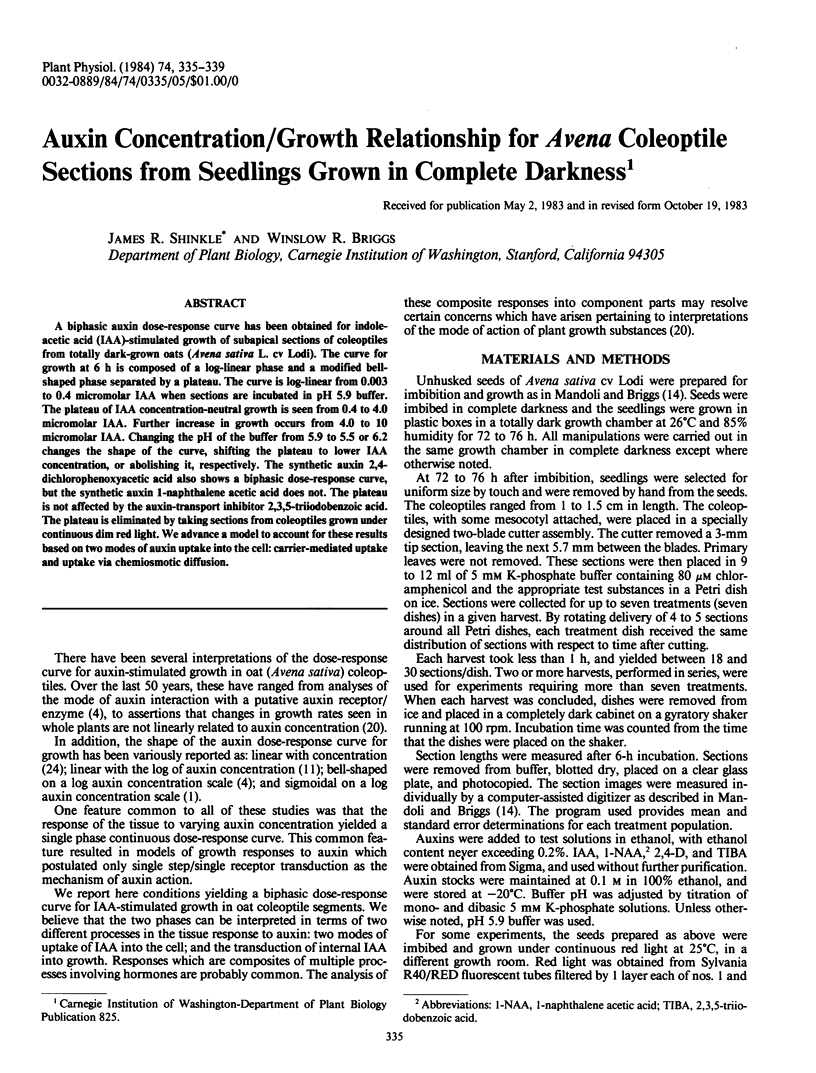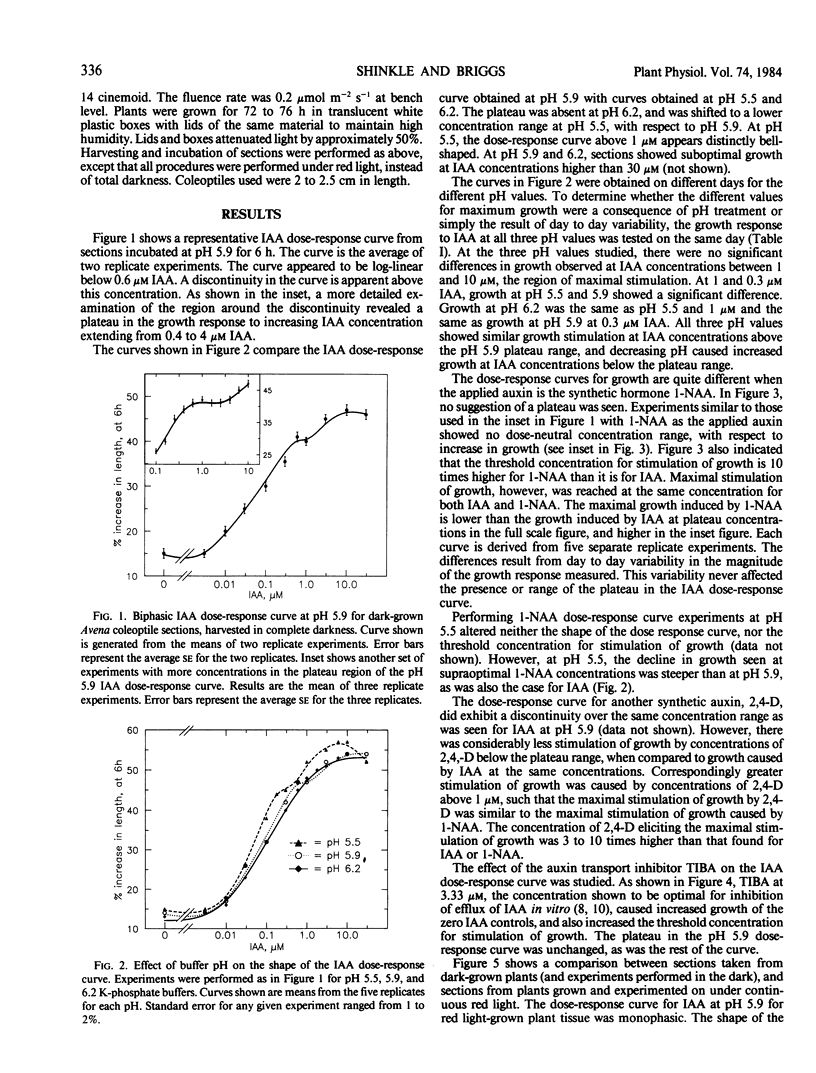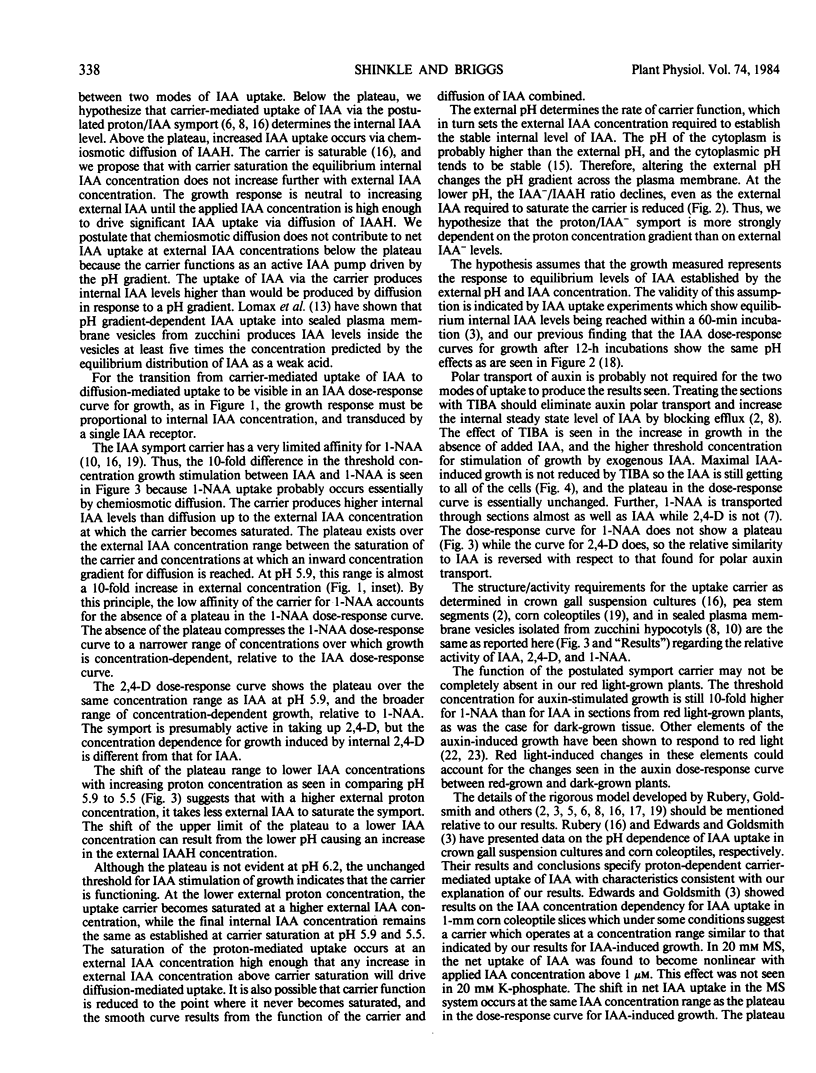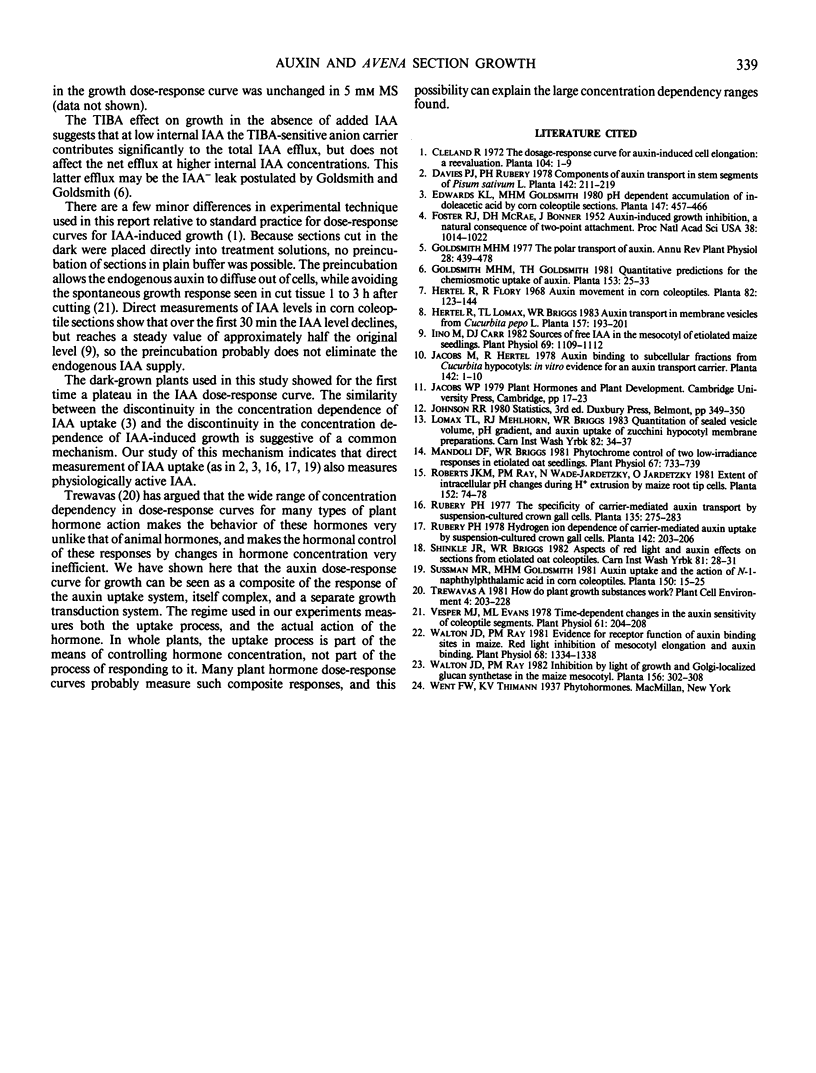Abstract
A biphasic auxin dose-response curve has been obtained for indole-acetic acid (IAA)-stimulated growth of subapical sections of coleoptiles from totally dark-grown oats (Avena sativa L. cv Lodi). The curve for growth at 6 h is composed of a log-linear phase and a modified bell-shaped phase separated by a plateau. The curve is log-linear from 0.003 to 0.4 micromolar IAA when sections are incubated in pH 5.9 buffer. The plateau of IAA concentration-neutral growth is seen from 0.4 to 4.0 micromolar IAA. Further increase in growth occurs from 4.0 to 10 micromolar IAA. Changing the pH of the buffer from 5.9 to 5.5 or 6.2 changes the shape of the curve, shifting the plateau to lower IAA concentration, or abolishing it, respectively. The synthetic auxin 2,4-dichlorophenoxyacetic acid also shows a biphasic dose-response curve, but the synthetic auxin 1-naphthalene acetic acid does not. The plateau is not affected by the auxin-transport inhibitor 2,3,5-triiodobenzoic acid. The plateau is eliminated by taking sections from coleoptiles grown under continuous dim red light. We advance a model to account for these results based on two modes of auxin uptake into the cell: carrier-mediated uptake and uptake via chemiosmotic diffusion.
Full text
PDF




Selected References
These references are in PubMed. This may not be the complete list of references from this article.
- Foster R. J., McRae D. H., Bonner J. Auxin-Induced Growth Inhibition a Natural Consequence of Two-Point Attachment. Proc Natl Acad Sci U S A. 1952 Dec;38(12):1014–1022. doi: 10.1073/pnas.38.12.1014. [DOI] [PMC free article] [PubMed] [Google Scholar]
- Iino M., Carr D. J. Sources of Free IAA in the Mesocotyl of Etiolated Maize Seedlings. Plant Physiol. 1982 May;69(5):1109–1112. doi: 10.1104/pp.69.5.1109. [DOI] [PMC free article] [PubMed] [Google Scholar]
- Mandoli D. F., Briggs W. R. Phytochrome control of two low-irradiance responses in etiolated oat seedlings. Plant Physiol. 1981 Apr;67(4):733–739. doi: 10.1104/pp.67.4.733. [DOI] [PMC free article] [PubMed] [Google Scholar]
- Vesper M. J., Evans M. L. Time-dependent Changes in the Auxin Sensitivity of Coleoptile Segments: Apparent Sensory Adaptation. Plant Physiol. 1978 Feb;61(2):204–208. doi: 10.1104/pp.61.2.204. [DOI] [PMC free article] [PubMed] [Google Scholar]
- Walton J. D., Ray P. M. Evidence for Receptor Function of Auxin Binding Sites in Maize : RED LIGHT INHIBITION OF MESOCOTYL ELONGATION AND AUXIN BINDING. Plant Physiol. 1981 Dec;68(6):1334–1338. doi: 10.1104/pp.68.6.1334. [DOI] [PMC free article] [PubMed] [Google Scholar]


